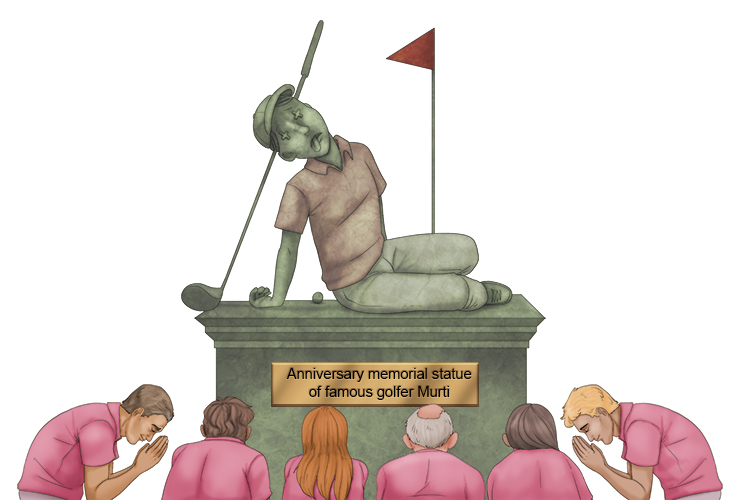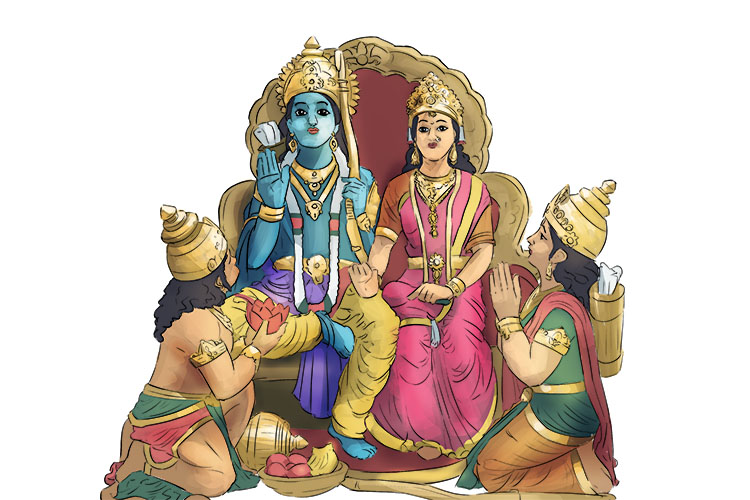Murti – The consecrated statue of a deity used in worship
(Pronounced muhr-tee)
To remember the meaning of the Hindu term Murti, use the following mnemonic:
It was murder at the tee (murti) - the famous golfer was killed on the course. A statue of him was unveiled on the anniversary of the day it sadly (deity) happened and fans worshipped it.

Murtis are semi-humanised images or statues of Hindu deities, or gods. Murti means 'embodiment' and studying a murti is meant to inspire those who study them closely.
A murti is constructed with careful symbolism that closely relates to the deity it represents.
The images or sculptures are placed inside or outside the mandir (temple) or home as part of processional festivities, or as a cultural landmark.
A murti can be made in one of two forms: a raudra or ugra murti is designed to incite fear, whereas a shanta or saumya murti is meant to show compassion, peace and kindness.
It is believed that the particular qualities of a deity are transmitted to those who study and meditate upon its murti.





